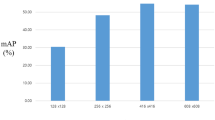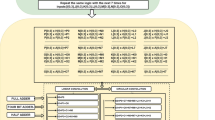Abstract
The main goal of this paper is to design an efficient 2D FIR digital filter for digital image processing and digital signal processing applications. To optimize filter speed, area and power different multipliers like array, Wallace tree, Booth and Vedic are used in the design of filters. Among these multipliers, Vedic multiplier reduces the partial products in multiplication. This increases the speed of the multiplication process. Vedic multiplier is based on ancient mathematics and uses a sutra called “Urdhva Tiryabhyam”. This paper, proposes two methods to optimize speed, area and power. The first method uses a predictor block in Vedic multiplier. This helps in predicting the outputs with the help of previous outputs. In the second method Reusable Logic blocks are used in Vedic multiplier. This method occupies only less number of LUTs and slice registers. The 2D FIR digital filter is designed and implemented using the two proposed multipliers and the state of art multipliers. The experimental results show that the 2D FIR digital filter using Vedic multiplier with predictor has 71.07% less EDP and using Vedic multiplier with Reusable Logic has 89.5% less EDP compared to conventional Vedic multiplier. The 2D FIR filter designed using Verilog HDL, synthesized, simulated and implemented using Xilinx FPGA. Comparison of simulation results show that 2D FIR filter implemented using the proposed methods optimizes the speed, area and power of the filter.
















Similar content being viewed by others
References
Punitha, P. G., & Ramesh, R. (2015). Review of memory efficient 2-D finite impulse response (FIR) filter architecture. Middle-East Journal of Scientific Research, 23(5), 957–961
Aggarwal, A., Kumar, M., & Kumar Rawat, T. (2019). Design of two-dimensional FIR filters with quadrantally symmetric properties using the 2D L1-method. IET Signal Processing, 13(3), 262–272
Suresh, S., & Lal, S. (2017). Two-dimensional CS adaptive FIR Wiener filtering algorithm for the denoising of satellite images. IEEE Journal of Selected Topics in Applied Earth Observations and Remote Sensing, 10(12), 5245–5257
Horé, A., & Yadid-Pecht, O. (2019). On the design of optimal 2D filters for efficient hardware implementations of image processing algorithms by using power-of-two terms. Journal of Real-Time Image Processing, 16, 429–457
Mohanty, B. K., Meher, P. K., Al-Maadeed, S., et al. (2014). Memory footprint reduction for power-efficient realization of 2D FIR filters. IEEE Transactions on Circuits and Systems I, 61(1), 120–133
Kumar, J. V., & Charlie, C. K. (2014). Design of modified Vedic multiplier and FPGA implementation in multilevel 2D-DWT for image processing applications. In 2nd International conference on current trends in engineering and technology (pp. 508–511).
Manikandan, S. K., & Palanisamy, C. (2016). Design of an efficient binary Vedic multiplier for high speed applications using Vedic mathematics with bit reduction technique. Circuits and Systems., 7(9), 2593–2602
Manasa, B. K. (2015). FPGA implimentation of high speed digital linear phase parallel FIR filter. International Journal Of Engineering Research & Technology, 3(19), 150
Alawad, M., & Lin, M. (2017). Memory-efficient probabilistic 2-D finite impulse response(FIR) filter’. IEEE Transactions on Multi-Scale Computing Systems. https://doi.org/10.1109/TMSCS.2017.2695588
Mittal, A., Nandi, A., & Yadav, D. (2017). Comparative study of 16-order FIR filter design using different multiplication techniques. IET Circuits, Devices and Systems, 11(3), 196–200
Leon, V., Xydis, S., et al. (2019). Energy-efficient VLSI implementation of multipliers with double LSB Operands. IET Circuits Devices System, 13(6), 816–821
Reusens, P., Ku, W. H., & Mao, Y. H. (1981). Fixed-point high-speed parallel multipliers in VLSI. Berlin: Springer. https://doi.org/10.1007/978-3-642-68402-9_33
He, Y., Yang, J., & Chang, C. H. (2017). Design and evaluation of booth-encoded multipliers in redundant binary representation. In A. Molahosseini, L. de Sousa, & C. H. Chang (Eds.), Embedded systems design with special arithmetic and number systems. (pp. 113–147). Springer.
S. P., & Khan, A. A. (2018). Comparison of Braun multiplier and Wallace multiplier techniques in VLSI. In 4th international conference on devices, circuits and systems (ICDCS), Coimbatore, (pp. 48–53).
Gupta, T., & Sharma, J. B. (2018). Han-Carlson adder based high-speed Vedic multiplier for complex multiplication. Microsystems Technologies. https://doi.org/10.1007/s00542-018-3872-8
Sumalatha, M., Naganjaneyulu, P. V., & Prasad, K. S. (2019). Low Power and low area VLSI implementation of vedic design FIR filter for ECG signal de-noising. Elsiever Microprocessors and Microsystems, 71, 102883
Pawale, D., & Ghodke, N. (2015). High Speed Vedic multiplier design and implementation on FPGA. International Journal of Applied Research., 1(7), 239–244
Venkatachalam, S., Adams, E., et al. (2019). Design and analysis of area and power efficient approximate booth multipliers. IEEE Transactions on Computers. https://doi.org/10.1109/TC.2019.2926275
Chudasama, A., Sasamal, T. N., et al. (2017). An efficient design of Vedic Multiplier using ripple carry adder in Quantum-dot Cellular Automata. Elsevier Computers and Electrical Engineering. https://doi.org/10.1016/j.compeleceng.2017.09.019
Sivanandam, K., & Kumar, P. (2019). Design and performance analysis of reconfigurable modified Vedic Multiplier with 3-1-1-2 compressor. Elsevier Microprocessors and Microsystems., 65, 97–106
Bindima, T., & Elias, E. (2016). Design of efficient circularly symmetric two-dimensional variable FIR digital filters. Journal of Advanced Research., 7(3), 336–347
Kumar, C. V., Ramaiah, G. N., & Rasadurai, K. (2018). Design of radix-8 Mbe-multiplier based on efficient parallel multiplier accumulator. International Journal of Scientific Research in Science, Engineering and Technology., 4(10), 2394–4099
Chen, P. Y., et al. (2010). Power-efficient and cost-effective 2-D Symmetry filter architectures. IEEE Transactions on Circuits and Systems I., 58(1), 112–125
Chen, P. Y., et.al. (2013). Area effificient 2-D digital filter architectures possessing diagonal and four fold rotational symmetries. In International conference on informations, communications and signal processing (IEEE) (pp. 1–5).
Karthikeyan, S., & Jagadeeswari, M. (2020). Performance improvement of elliptic curve cryptography system using low power, high speed 16 × 16 Vedic multiplier based on reversible logic. Journal of Ambient Intelligence and Humanized Computing. https://doi.org/10.1007/s12652-020-01795-5
Sri Bharti Krishna Tirthaji Maharaja. (1965). Vedic Mathematics or Sixteen Simple Mathematical Formulae from the Veda. Delhi, Motilal Banarsidass, Varanasi, India.
Prasad, K. K. (2016). An emprical study on role of Vedic mathematics in improving the speed of basic mathematical operations. International Journal of Management, IT and Engineering., 6(1), 161–171
Author information
Authors and Affiliations
Corresponding author
Additional information
Publisher's Note
Springer Nature remains neutral with regard to jurisdictional claims in published maps and institutional affiliations.
Rights and permissions
About this article
Cite this article
Christilda, V.D., Milton, A. Speed, power and area efficient 2D FIR digital filter using vedic multiplier with predictor and reusable logic. Analog Integr Circ Sig Process 108, 323–333 (2021). https://doi.org/10.1007/s10470-021-01853-8
Received:
Revised:
Accepted:
Published:
Issue Date:
DOI: https://doi.org/10.1007/s10470-021-01853-8




